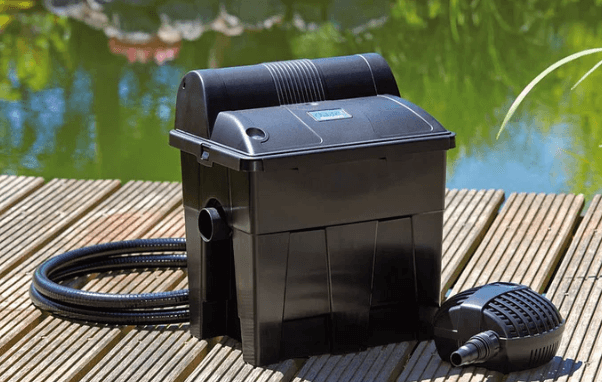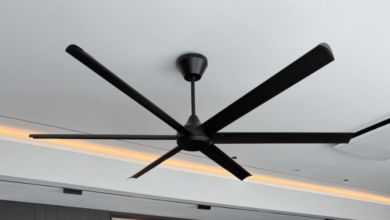Refreshing Your Pond with Oase: A Smarter Way to Clear Water Living

A backyard pond should be a place of beauty and peace—sparkling clear water, happy fish, and thriving plants. But without regular care, it can turn into a cloudy, algae-filled headache. Fortunately, creating a clean and balanced aquatic environment is not out of reach. With the right methods and trusted tools like those offered by Oase, maintaining a vibrant pond becomes easier and more effective.
Let’s walk through practical, down-to-earth strategies to help you keep your pond looking and feeling fresh all year long.
Why Clean Water Matters More Than You Think
It’s not just about aesthetics. Murky, debris-filled water can cause serious harm to your pond’s delicate ecosystem. Here’s what can happen if your pond gets out of balance:
- Algae can take over, blocking light and crowding out beneficial plants.
- Fish may suffer from low oxygen levels and poor water quality.
- Organic waste buildup can overwhelm filters and lead to foul smells or even fish loss.
Clear water supports life—not just for the fish and plants, but also for the people who enjoy being near it. A well-maintained pond is safer, more beautiful, and much easier to manage over time.
Everyday Habits That Make a Big Difference
Creating a consistently clean pond doesn’t have to be overwhelming. Here are some simple yet effective routines to keep your water garden in great shape.
Skim Away Trouble Early
Floating debris like leaves, twigs, and pollen can decompose quickly and feed algae. Make it a habit to skim your pond with a net every few days, especially after storms or in fall. Installing a surface skimmer or a seasonal net cover can further reduce buildup.
Get to Know Oase Filtration
The heart of a clean pond is a good filtration system. Oase designs some of the most efficient and user-friendly filter solutions available, from compact units for small water features to professional-grade drum filters for koi ponds.
Their systems combine mechanical and biological filtration—removing physical waste while supporting beneficial bacteria that naturally clean the water. The result? Less maintenance and healthier conditions for aquatic life.
Keep Algae in Check—Naturally
A little algae is normal. A lot of algae? Not so much. You can prevent excessive algae growth by:
- Installing an Oase UV clarifier, which neutralizes algae cells without harming fish or plants.
- Adding floating plants like water lilies to reduce sunlight hitting the water’s surface.
- Avoiding overfeeding your fish—uneaten food feeds algae.
Circulate and Oxygenate
Still water can turn stagnant fast. Adding a fountain, waterfall, or aerator keeps water moving and boosts oxygen levels. Healthy circulation helps prevent algae, supports fish, and encourages beneficial microbes to thrive.
Balance the Fish Load
Too many fish means too much waste, which can quickly lead to murky water. Choose species suited to your pond size and avoid overcrowding. A general guideline is one inch of fish per ten gallons of water.
Refresh With Partial Water Changes
Every few weeks, replace about 10%–20% of your pond water with clean, dechlorinated water. This helps remove dissolved pollutants and dilute excess nutrients without disturbing the ecosystem.
Harnessing Nature for Cleaner Water
Technology is great—but nature still knows best when it comes to balance. These natural aids can make a surprising impact on your pond’s clarity and overall health.
Beneficial Bacteria
Adding bacteria supplements helps break down fish waste, uneaten food, and decaying organic material. These living cleaners support your filter and reduce sludge.
Barley Straw
As it decays, barley straw releases natural compounds that inhibit algae growth. It’s a low-tech, eco-friendly method that’s especially useful in spring and summer.
Aquatic Plants
Plants like hornwort, anacharis, and pickerelweed not only beautify your pond but also absorb nutrients that would otherwise feed algae. They also provide cover for fish and encourage insect biodiversity.
What to Avoid If You Want a Clean Pond
Maintaining a pond is as much about what not to do as it is about regular care. Here are some common mistakes that can undo all your hard work:
- Neglecting your filter: Dirty or clogged filters stop working effectively and may even push toxins back into the water.
- Over-relying on chemicals: Harsh treatments can kill algae—but also hurt fish, plants, and helpful bacteria.
- Feeding your fish too much: Feed only what they can eat in 2–3 minutes.
- Ignoring the seasons: Each season brings unique challenges—from falling leaves in autumn to ice in winter. Adjust your routine accordingly.
Smart Upgrades Worth Considering
If your pond is large, deep, or stocked with lots of fish, a more advanced solution might be necessary. That’s where Oase truly shines. Their ProfiClear Premium systems, for example, include automated drum filters and intelligent controls that adjust to water conditions in real time. These high-end solutions take much of the guesswork out of maintenance and provide peace of mind for serious pond keepers.
Even smaller setups can benefit from upgrading to pressurized filters or installing a bio-smart UV clarifier for better results with less hands-on work.
A Long-Term View: Patience Pays Off
Building a healthy pond is a process, not a quick fix. It may take a few weeks to see noticeable changes when you switch to a new routine or install better filtration. Stick with it. Monitor water quality, keep an eye on your fish, and adjust your methods as the seasons shift.
Your efforts will pay off with a sparkling pond that reflects your care—and rewards you with peace and beauty every time you walk by.
Clearing Up Confusion
How often should I clean my pond filter?
It depends on your filter type and fish load. For basic filters, once every 1–2 weeks is standard. Advanced Oase filters often require less frequent cleaning due to automated systems.
Can I use tap water for water changes?
Yes, but make sure to use a dechlorinator if your tap water contains chlorine or chloramines, which can harm fish and bacteria.
Is green water dangerous for fish?
Green water from algae isn’t always dangerous, but it signals an imbalance. It can reduce oxygen levels and block sunlight from reaching deeper plants.
Do I need a UV clarifier all year?
Not necessarily. UV clarifiers are most effective in spring and summer when algae blooms are common. You can turn them off in colder months when algae growth slows down.
Why is my water still cloudy after cleaning?
It could be due to fine particles, a bacterial imbalance, or overfeeding. Consider adding beneficial bacteria or using a fine-mesh mechanical filter to trap small debris.
Final Thoughts
A crystal-clear pond isn’t just about looks—it’s a reflection of balance, care, and connection with nature. With the right habits, thoughtful upgrades, and dependable products like those from Oase, maintaining a clean and thriving pond becomes less of a chore and more of a rewarding routine.
By combining smart filtration, gentle natural methods, and regular attention, you can turn your water garden into a peaceful retreat where fish flourish, plants bloom, and water sparkles through every season. Whether you’re starting from scratch or fine-tuning an established pond, a little effort goes a long way—and the results speak for themselves.
Take the time, make the investment, and watch your pond transform into a living masterpiece.





